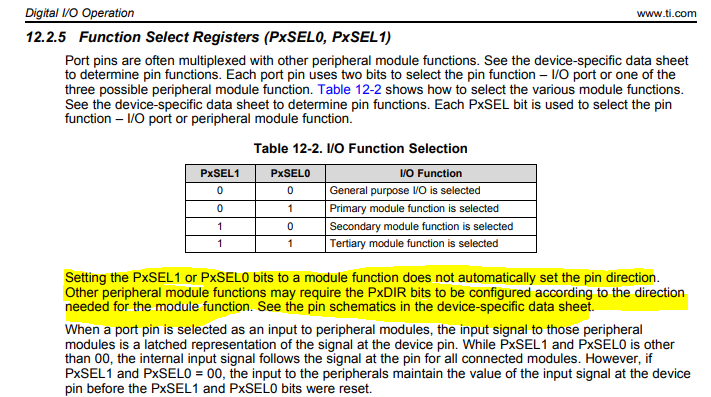Other Parts Discussed in Thread: MSP430FR6989
Hi,
I am using the eUSCI_B as a master SPI and I think I am missing something because I cannot see a clock signal. I did not set the PxDIR register as the manual made it seem like the value of that register was tranferred over for control by the eUSCI module? Anyways I am going back and reading the datasheet more closely and noticing that for P1.7 on the MSP430FR5969 P1.7 is SOMI (MISO) for SPI_B0, but the manual says that the PxDIR direction is controlled by eUSCI_A0 which actually makes no sense to me. Why would a eUSCI_B pin be controlled by a specific instance of eUSCI_A? Do I need to initialize eUSCI_A0 in order to get the clock going? Here's a screenshot for reference:



